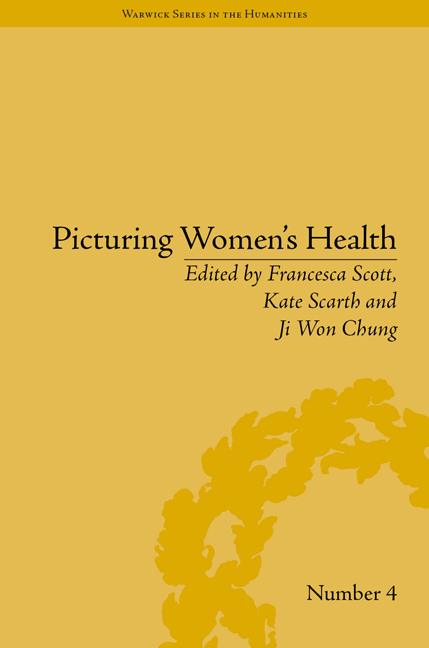Book contents
- Frontmatter
- CONTENTS
- Acknowledgements
- List of Contributors
- List of Figures
- Introduction: Picturing Women's Health
- 1 Sensibility and Good Health in Charlotte Smith's Ethelinde
- 2 Amazonian Fashions: Lady Delacour's (Re)Dress in Maria Edgeworth's Belinda
- 3 Transforming the Body Politic: Food Reform and Feminism in Nineteenth-Century Britain
- 4 Stagnation of Air and Mind: Picturing Trauma and Miasma in Charlotte Brontë's Villette
- 5 The Iconography of Anorexia Nervosa in the Long Nineteenth Century
- 6 Kate Marsden's Leper Project: On Sledge and Horseback with an Outcast Missionary Nurse
- 7 Constructs of Female Insanity at the Fin de Siècle: The Lawn Hospital, Lincoln, 1882–1902
- 8 The Fitness of the Female Medical Student, 1895–1910
- 9 Unstable Adolescence/Unstable Literature? Managing British Girls' Health around 1900
- NOTES
- Index
2 - Amazonian Fashions: Lady Delacour's (Re)Dress in Maria Edgeworth's Belinda
- Frontmatter
- CONTENTS
- Acknowledgements
- List of Contributors
- List of Figures
- Introduction: Picturing Women's Health
- 1 Sensibility and Good Health in Charlotte Smith's Ethelinde
- 2 Amazonian Fashions: Lady Delacour's (Re)Dress in Maria Edgeworth's Belinda
- 3 Transforming the Body Politic: Food Reform and Feminism in Nineteenth-Century Britain
- 4 Stagnation of Air and Mind: Picturing Trauma and Miasma in Charlotte Brontë's Villette
- 5 The Iconography of Anorexia Nervosa in the Long Nineteenth Century
- 6 Kate Marsden's Leper Project: On Sledge and Horseback with an Outcast Missionary Nurse
- 7 Constructs of Female Insanity at the Fin de Siècle: The Lawn Hospital, Lincoln, 1882–1902
- 8 The Fitness of the Female Medical Student, 1895–1910
- 9 Unstable Adolescence/Unstable Literature? Managing British Girls' Health around 1900
- NOTES
- Index
Summary
In the course of Edgeworth's 1801 novel Belinda, the fashionable Lady Delacour suffers from sexual, physical and mental health problems caused, in part, by her dissipated London lifestyle. First, she becomes entangled in the pseudo-feminist Harriet Freke's homoerotic desires and cross-dressing; political campaigns; and a duel with her female rival, Mrs Luttridge, which results in a self-inflicted wound to her breast. Because she disguises this wound and consults a trendy quack doctor, Lady Delacour's health declines throughout the novel almost to the point of death. Poorly prepared for her seemingly imminent demise, Lady Delacour turns in desperation to Methodism, which causes delusions exploited by her one-time friend, Freke.
The original plan of Edgeworth's novel climaxes in Lady Delacour's tragic death, providing a somewhat clichéd conclusion to a standard anti-fashion satire. Her survival, rehabilitation and, indeed, triumph in the published novel cause havoc with Edgeworth's moralistic framework. Lady Delacour's redress hinges on her own overt questioning of the healthiness of the female body, the naturalness of her position as wife and mother, and, in a startlingly metatextual manoeuvre, the marriage plot of the eighteenth-century novel itself, revealing each to be fashionable constructs. Lady Delacour orchestrates the final scene of the novel, challenging both characters and readers with her final words, ‘Our tale contains a moral, and no doubt, / You all have wit enough to find it out’. I argue that Lady Delacour's witty questioning of morals and manners in contemporary tales reveals both to depend upon the fashionable ideologies underpinning modern society, from the medical imperative for mothers to breastfeed their children, to men's desire for a ‘natural’ woman untainted by ‘fashion’, to the mechanics of the eighteenth-century marriage plot itself.
- Type
- Chapter
- Information
- Picturing Women's Health , pp. 29 - 44Publisher: Pickering & ChattoFirst published in: 2014

